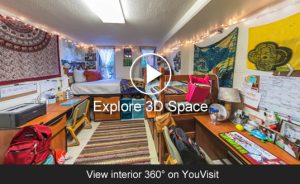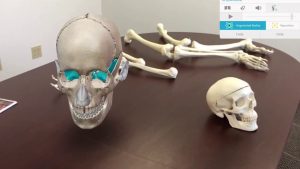Virtual reality (VR) is an interactive computer-generated experience occurring within an artificial environment. Augmented reality (AR) is an interactive enhanced version of reality created by overlaying computer generated data on a real-world environment. Although these technologies were once limited to gaming, educators are quickly becoming aware of the countless ways VR and AR can be integrated into classrooms to revolutionize the learning experience.
 Taking an online tour of North Carolina State University’s campus was my first VR experience. Before I was able to visit this school in person, I took an interactive virtual tour of the campus. This use of VR technology helped me feel a connection to NC State even before I visited. Virtual campus tours allow prospective students to consider more colleges, including schools they are unable to visit in person. Companies including Campus Tours and YouVisit currently offer virtual tours of hundreds of campuses.
Taking an online tour of North Carolina State University’s campus was my first VR experience. Before I was able to visit this school in person, I took an interactive virtual tour of the campus. This use of VR technology helped me feel a connection to NC State even before I visited. Virtual campus tours allow prospective students to consider more colleges, including schools they are unable to visit in person. Companies including Campus Tours and YouVisit currently offer virtual tours of hundreds of campuses.
My first AR experience was playing Pokémon Go on my phone.  This mobile game uses AR technology to allow players to catch Pokémon hidden near their physical location. The sweeping success of this app demonstrates the widespread interest in AR experiences, especially among young people.
This mobile game uses AR technology to allow players to catch Pokémon hidden near their physical location. The sweeping success of this app demonstrates the widespread interest in AR experiences, especially among young people.
According to a report by Goldman Sachs, it is estimated that virtual or augmented reality technology could reach 15 million students by 2025. Maya Georgieva, the co-founder of Digital Bodies, says teachers unanimously agree that VR and AR experiences “generate more questions and more engagement in students.” This technology creates an immersive experience and therefore promotes engagement and better retention of information. This article highlights the benefits of implementing VR and AR experiences into the classroom.
Because the amount of content is rapidly increasing, AR and VR experiences can be used to  aid in teaching numerous subjects. Rebecca Girard, for example, has been using mixed reality computers from zSpace to teach her high school biology class about how the heart works. Apps including Cyber Science, zSpace Studio, and Human Anatomy Atlas allow students to follow the path of blood flowing through the heart. This article describes several educational uses of VR and AR technology across the world.
aid in teaching numerous subjects. Rebecca Girard, for example, has been using mixed reality computers from zSpace to teach her high school biology class about how the heart works. Apps including Cyber Science, zSpace Studio, and Human Anatomy Atlas allow students to follow the path of blood flowing through the heart. This article describes several educational uses of VR and AR technology across the world.
I am excited to integrate AR and VR technology into my future classroom. For example, I can use Quiver Education, an augmented reality coloring app, to teach a variety of topics including cell structure. I could also use VR simulations, like those in Global Nomads’ One World, Many Stories program, to connect my classroom with other classrooms around the world.
One major drawback of using VR in the classroom is the high cost of implementing this technology. Because VR devices are costly, I might be unable to obtain a device for every student. To allow every student to participate, I could have students rotate through a VR station as they complete other center activities. A major benefit of AR technology is that it does not require hardware to run. As a result, each of my students could complete an AR activity if they are given a device to use through the school.